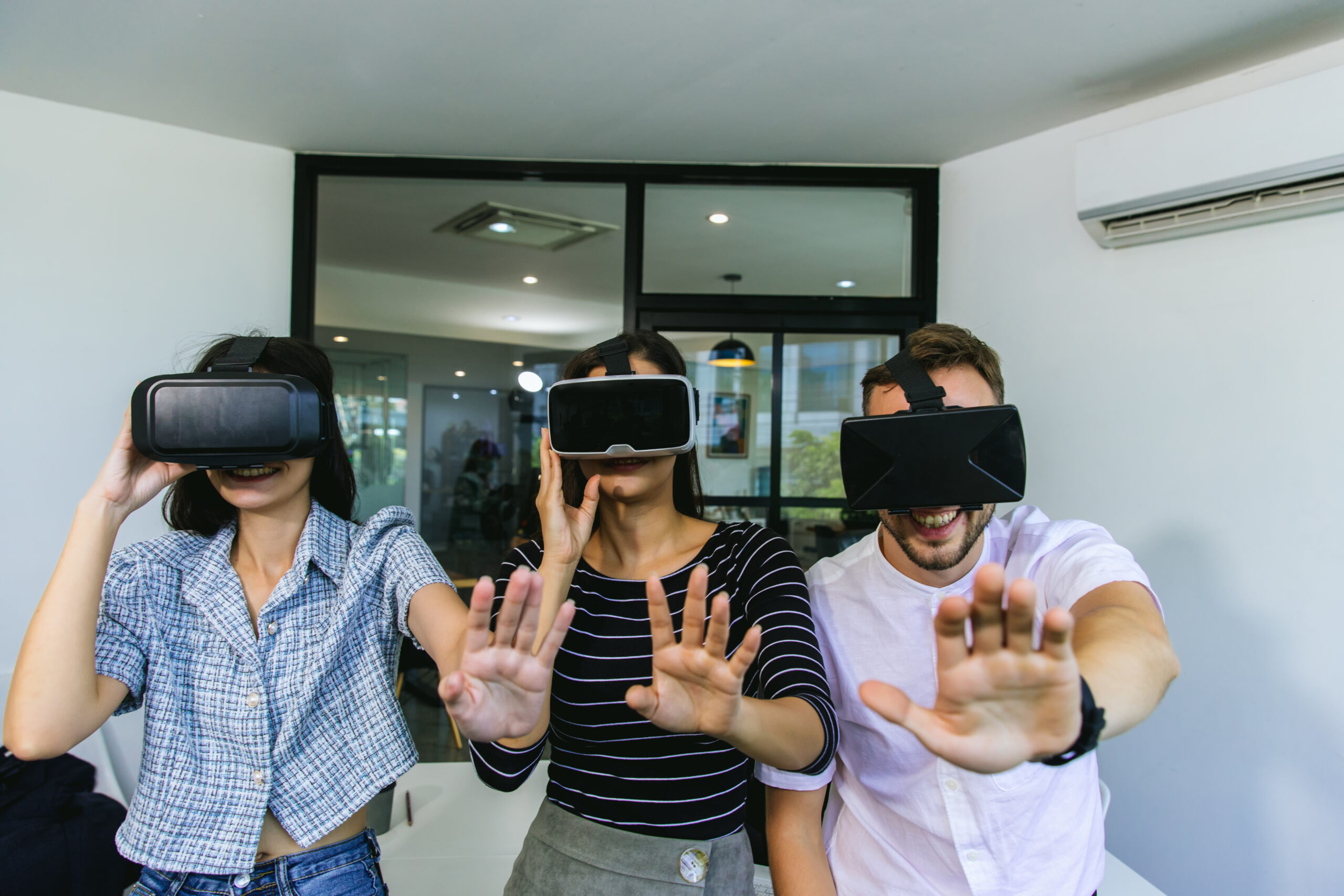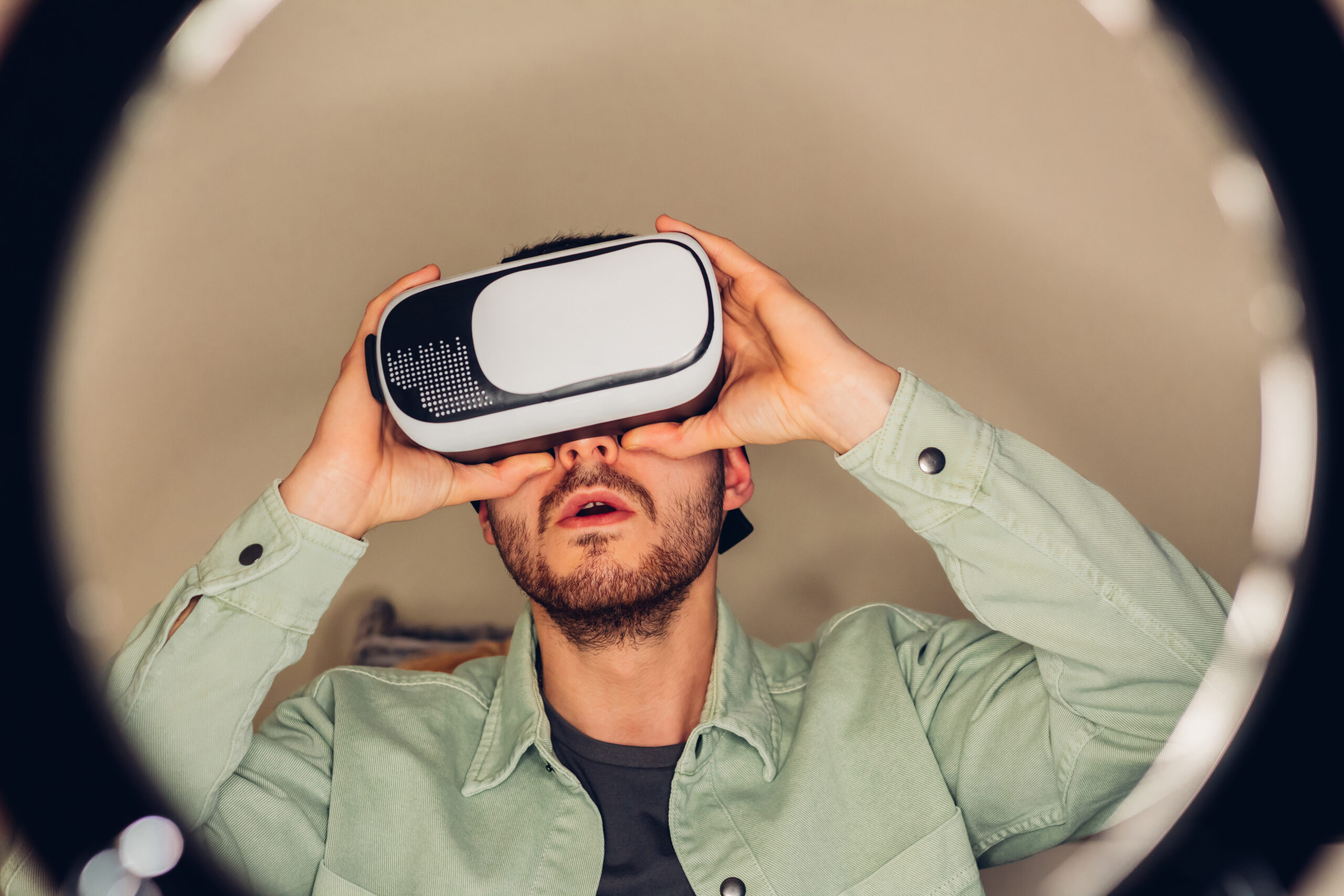Marketing in Metaverse
Imagine a virtual reality world where people come together, connect, buy, sell, and even live out their wildest dreams. That’s the power of the Metaverse! And guess what? This mind-boggling concept is transforming the way marketers think and act.

Forget about traditional advertising methods; they’re on the verge of extinction. The Metaverse is where it’s at!
What is the Metaverse? And what are its features?
Now, what exactly is the Metaverse? Defining what the Metaverse is might be difficult as there are various theories about it. In a recent discussion with McKinsey, venture capitalist Matthew Ball sheds light on the promise of the metaverse, highlighting its key features.
-
Immersive Environments
-
Always On, Real-Time
-
Spanning Virtual and Physical Worlds
-
Virtual Economy, comprising of cryptocurrencies or NFTs
-
Virtual Identities and Interactions using avatars

Marketing in Metaverse is usually targeted towards Gen Z and Millennials.
While it is crucial to bring this tech-savvy generation on board, we also require to engage the existing customers, as engaging existing customers would help build brand trust and launch successful new campaigns.
Identifying the relevant platforms:
One of the key marketing strategies is to identify the relevant platforms which provide the best opportunity as well as promote the brand. For example, the luxury brand Balenciaga collaborated with Fortnite, a gaming platform to give its users the experience of being in a real Balenciaga retail store.

There are also a few platforms that have already begun leveraging the power of the Metaverse.
These include:
-
The Sandbox
-
Roblox
-
Illuvium
-
Axie Infinity
-
Star Atlas
-
Fortnite
-
Minecraft, etc.
The Importance of SEO in Metaverse
As the metaverse continues to gain momentum, brands must adapt their marketing strategies to ensure visibility in this immersive digital realm. Search Engine Optimization (SEO) plays a crucial role in positioning your brand organically within the metaverse.

Developing content tailor-made for Metaverse by analyzing trends and topics.
Optimizing the content according to the search algorithm and ranking factors of the metaverse.
Sales and Money making strategy
Brands in the metaverse are exploring diverse revenue streams and experimenting with money-making models. While direct sales may not be prevalent currently, brands are planning for future potential.
Nike has already achieved impressive sales in the virtual realm, with virtual sneakers fetching a staggering $186,000. By embracing the metaverse, Nike is capitalizing on the evolving landscape where digital fashion and immersive experiences hold immense potential.
Analyzing Metrics in the Metaverse
In the metaverse, it’s essential to rethink how we measure marketing success. While traditional digital marketing relies on metrics like visitor count, conversions, likes, and shares, the metaverse demands new engagement metrics that account for unique behavioral economics.

In the metaverse, marketing metrics will focus on the movement and behavior triggers of avatars, requiring us to monitor success differently.
Metrics like likes and followers will transform, with users curating items in watchlists or for future consumption. Conversions will be influenced by the number of destinations visited, steps taken, and the overall experience, shaping purchase decisions. Overall, the metaverse demands a shift in metrics towards tracking experiences and user engagement.

Examples of brands marketing on Metaverse
Wendy’s
Wendy’s, the fast food chain, entered the metaverse by launching the Wendy Verse in the popular online game by Roblox. They created a virtual restaurant called Buck Biscuit Dome, which they are actively promoting on their official Facebook and Instagram pages.
Nikeland
Nike created “Nikeland,” a virtual environment within Roblox Studio, to engage sports and gaming enthusiasts. Inspired by Nike’s original headquarters, Nikeland offers unique experiences such as trying on virtual products, purchasing NFTs, participating in mini-games for rewards, and accessing a digital showroom to buy garments and customize Nike-branded accessories.
Coca-Cola
Coca-Cola entered the metaverse by launching an NFT collection on OpenSea. The collection, called Coca-Cola Friendship Loot Box, was released on International Friendship Day. The branded NFT assets can be used by avatars, and the highest bidder won a real-life Coca-Cola refrigerator filled with Coca-Cola. The collection was sold for over US$575,000.
Louis Vuitton
The fashion industry is embracing the metaverse by offering unique NFT wearables for in-game avatars. Luxury brand Louis Vuitton launched a 30-piece NFT collection in its game, Louis the Game, to celebrate its 200 years of fashion. Players can explore city streets, collect candles, and learn about Louis Vuitton’s history.
Burberry
Burberry, a renowned fashion brand, has entered the metaverse by launching its first NFT collection in collaboration with the game Blankos Block Party. The collection includes virtual wearables and a character adorned with Burberry logos. This move showcases Burberry’s ability to adapt to different experiences and communities. Additionally, Burberry participated in the Metaverse Fashion Week in March 2022.

Conclusion
The metaverse presents immense opportunities for marketing and advertising. As the metaverse continues to evolve, brands will have incentives to test and learn, embracing the rapid developments in augmented and virtual reality, consumer journey analytics, and social commerce.
By blurring the lines between the physical and digital worlds, brands can cater to specific audiences and deliver personalized consumer interactions. With the ability to launch video games and virtual shopping stores, marketing to younger audiences becomes more natural. As the metaverse gains momentum, marketers must stay agile and secure the talent needed to navigate this exciting digital landscape.
